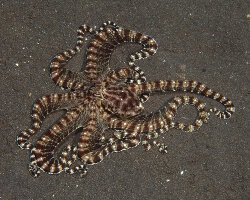Sealife guideThe leatherback sea turtleDermochelys coriacea
Last updated on 02/24/2025 at 09:28 PM
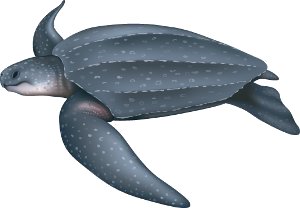
The leatherback sea turtle (Dermochelys coriacea)
Taxonomy
- Common name: Leatherback sea turtle
- French name: Tortue luth
- Spanish name: Tortuga laúd
- Scientific name: Dermochelys coriacea (Vandelli, 1761)
- Family name: Dermochelyidae
- Order name: Testudines
- Class name: Sea reptiles
Description
The leatherback sea turtle is impressive and imposing in many ways: 5.2 feet in length with an average weight of 770 lbs ! Its front flippers are also large and, relatively speaking, bigger compared to other species of sea turtles !

The largest of the sea turtles: the leatherback sea turtle !
The leatherback sea turtle is certainly the easiest sea turtle species to identify ! Indeed, unlike other species of sea turtles, the top of the leatherback sea turtle's shell, or carapace, does not have scales, and it also lacks prefrontal plates on its forehead. Additionally, its flippers do not have scales, and its front flippers are devoid of claws.
The shell of the leatherback sea turtle is made up of a bony structure with particularly visible raised longitudinal ridges, called carinae, similar to a boat's hull. There are 5 carinae on the ventral side and 7 on the dorsal side: one central carina called the vertebral carina, 2 pairs of lateral carinae on either side, and a final pair bordering the shell. This bony structure is completely covered by thick skin, providing the leatherback sea turtle with good protection against heat loss and some flexibility to withstand pressure when diving to great depths !
The upper jaw of the leatherback sea turtle extends on each side of its mouth with 2 sharp projections that give the impression of having 2 teeth !
The surface of the leatherback sea turtle's shell resembles the appearance of leather with a dominant dark color that leans toward midnight blue and a smooth texture ! The underside of the shell, or plastron, is lighter but still relatively dark. Its head, flippers, and shell are speckled with a multitude of whitish spots. The ridge of each of its carinae is white in color.
Geographic range
The leatherback sea turtle is found in all the seas and oceans across the globe: in warm tropical waters but also at latitudes near the polar circles where the waters are colder.
Habitat
The female leatherback sea turtle only frequents the shallow waters of the coasts during the breeding season to come ashore at night to nest and lay its eggs before returning to the open ocean. The rest of the time, the leatherback lives offshore in deeper waters: it is considered a pelagic species of sea turtle.
Diet
The leatherback sea turtle feeds almost exclusively on jellyfish, consuming them in large quantities ! However, its diet is not limited to jellyfish, as it also includes fish,
mollusks,
crustaceans and marine plants.
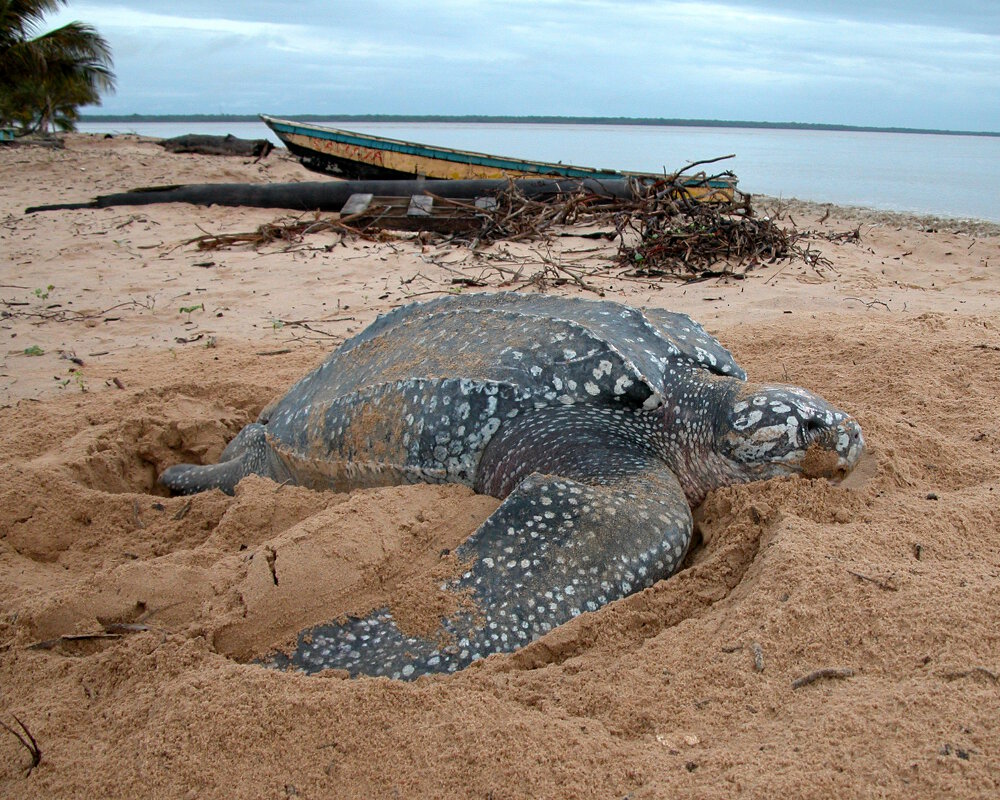
A leatherback sea turtle lays its eggs and buries them in the sand on a beach © Philippe SURMELY - Fotolia.com
Reproduction
The sexual maturity of the leatherback sea turtle is still not well understood due to the difficulty in observing leatherbacks, as they live and mate in the open ocean. However, the scientific community generally agrees that sexual maturity likely occurs around the age of 13 to 14 years.
After mating, the leatherback can lay multiple times – 3 to 5 times on average – during a single season, with intervals of about two weeks. However, mating for the same female does not occur every year, but only every 2 to 4 years !
The female comes ashore at night to lay about 100 eggs, each about 2 inches in diameter. After an incubation period of 2 months – if the temperature remains above 79°F – the eggs hatch, and baby leatherback sea turtles emerge measuring only a few inches (about 3 to 4 inches) ! If the temperature is around 84°F, the offspring will be mixed, with both male and female babies; otherwise, below that, the offspring will be exclusively male, and above that, exclusively female !
The main nesting sites for the leatherback sea turtle are located on the following beaches:
- The beaches of Eastern French Guiana (between Kourou and Cayenne island) and the Awala-Yalimapo beach located in the Amana Nature Reserve in Northwestern French Guiana
- Almost all of the beaches in Gabon, particularly those in the Mayumba National Park in the extreme south of Gabon
Did you know ?
The leatherback sea turtle is the largest of the sea turtle species living on the planet ! Over 6.5 feet in length and 1,980 lbs: these are the largest recorded figures to date for the most imposing of sea turtles !
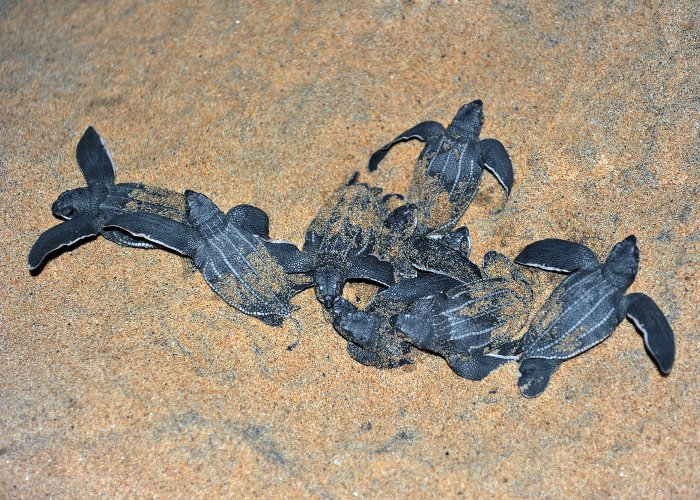
Baby leatherback sea turtles emerging from the nest after the eggs have hatched
Since 1982, the leatherback sea turtle has been listed on the
IUCN Red List as a threatened species, and in 2000, it was upgraded from 'endangered' to 'critically endangered.'
Individual identification of the leatherback sea turtle is made possible by the shape of the pink spot on the top of its head.
Discover also
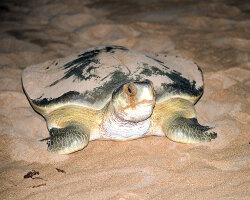
Flatback sea turtle
(Natator depressus)
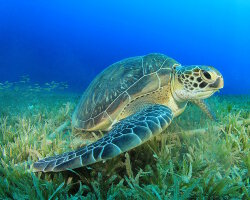
Green sea turtle
(Chelonia mydas)

Hawksbill sea turtle
(Eretmochelys imbricata)

Kemp's ridley sea turtle
(Lepidochelys kempii)
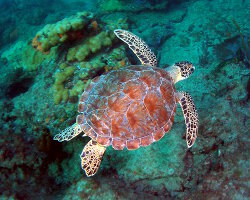
Loggerhead sea turtle
(Caretta caretta)
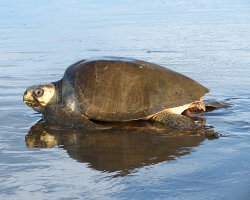
Olive ridley sea turtle
(Lepidochelys olivacea)
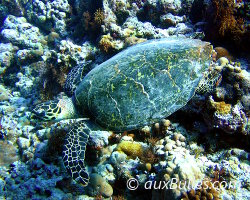
Sea turtle
(7 espèces)
The marine species from northwestern Atlantic ocean

Banded cleaner shrimp
(Stenopus hispidus)
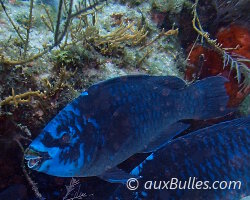
Midnight parrotfish
(Scarus coelestinus)

Mutton snapper
(Lutjanus analis)
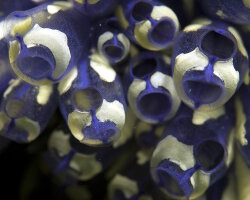
Painted tunicate
(Clavelina picta)

Sand tilefish
(Malacanthus plumieri)

Spanish hogfish
(Bodianus rufus)
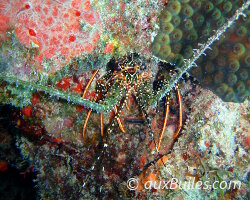
Spotted spiny lobster
(Panulirus guttatus)
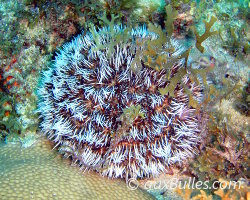
West Indian sea egg
(Tripneustes ventricosus)























